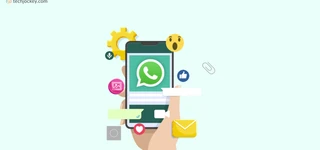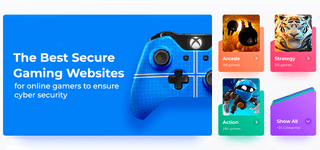Key Takeaways:
- Gamification helps in making tasks more engaging and interactive by using points, badges, rewards, and challenges.
- From education to fitness, and organizations to retail business, gamification works across many industries.
- It improves user engagement, motivates them, and makes them more productive throughout the tasks.
- Gamification should be smartly implemented, as over-reliance on rewards could cause only short-term motivation and does not work in the long term.
What is Gamification?
Gamification is the application of game design and principles in non-game situations to foster engagement amongst people. This can involve elements such as point scoring, competition with others, rules of play, and rewards in activities that are not traditionally considered games.
Gamification influences and shapes user behavior in different contexts. It boosts human psychology to achieve specific objectives. Gamification examples can be encouraging employees to complete training modules, motivating customers to interact with a brand, or inspiring students to actively participate in learning activities.
Overall, the integration of game elements into non-game environments has proved to be powerful for fostering user engagement, loyalty, and overall satisfaction.
Quick Fact: Gamification makes 90% of employees more productive.
Popular Gamification Elements
Gamification elements help bring productivity to the organization. One of the most prevalent elements that most organizations follow is point systems. This helps incentivize the desired course of action, achievement, or progress of an employee.
Let’s learn some more gamification elements.
- Point Systems: Point systems are used to incentivize desired behaviors. In this, users earn points for completing tasks, engaging with content, or reaching milestones. These points can then be redeemed for rewards or used to measure progress and achievement.
- Badges and Achievements: Badges and achievements are visual representations of milestones or specific accomplishments within a system. Here, users receive recognition for their efforts, such as completing levels, reaching goals, or demonstrating any expertise. Badges serve as a form of external validation and help drive continued engagement.
- Progress Bars and Leveling Up (Measure): In this, users can visually track their progress and see how close they are to achieving a goal. As they reach certain milestones, they level up, unlocking new features or privileges. This provides a sense of continuous progression and accomplishment.
- Virtual Rewards and Prizes: Virtual rewards, such as virtual currency, tokens, or in-game items, motivate users to engage with a system. These rewards are often redeemable as tangible incentives. Therefore, users get a clear incentive for their participation and accomplishments.
- Challenges and Quests: Challenges and quests introduce an element of competition and skill-building amongst users. They are associated with tasks or missions to complete. Each task offers a unique set of rewards upon successful completion. This technique promotes engagement and motivates users to overcome obstacles or achieve specific goals within the system.
- Leaderboards and Competition: Leaderboard is a popular gamification element to drive competition and social engagement. Through this, users can see where they rank compared to others, fostering a sense of competition. This also helps in increasing participation to improve their rankings and boosting social engagement.
- Social Sharing and Collaboration: This allows users to share their achievements and cooperate toward common objectives. This helps boost social relationships and increases user engagement.
Use Cases of Gamification
- Employee Training and Development: Gamification can be used in training new employees by making learning more engaging. Employees can feel more competitive when you include points, levels, and badges in training modules. This can be easily done by using any employee engagement software.
- Customer Engagement and Loyalty: Brands can encourage customers by using a reward system or making their experience interactive. For example, retail management software often allows users to collect points or badges after purchasing a product. The customers can redeem them later as discounts or exclusive offers.
- Sales and Productivity Boosting: Gamification in the sales team can help turn targets into fun challenges. Salespeople can compete by using leaderboards and unlock rewards for reaching milestones. Many productivity software offer gamification features.
- Health and Fitness: Gamification has helped a lot of people to stay active. There are many fitness apps, such as Fitbit or Strava, that offer badges, streaks, and challenges to help with better workouts.
- Education and E-learning: Almost all educational institutions use gamification in learning to improve student engagement. Quizzes, interactive games, and achievement badges help learners stay motivated and track progress. There are many E-learning software in the tech market that allow performing these activities.
- Project Management and Collaboration: Gamification helps in improving workplace collaboration and task completion. Some features, like progress tracking, virtual trophies, and peer recognition, make project management tools more interactive.
How to Use Gamification Elements?
Below are some of the key steps to implement gamification elements. These include:
- Defining Objectives:This emphasizes clearly outlining the goals you want to achieve with gamification. This could include increasing user engagement, fostering learning, improving productivity, and enhancing customer loyalty.
- Understanding Your Audience: Identify the target audience for gamification and understand their motivation, preferences, and behaviors. This understanding will help in designing game elements that resonate with them.
- Choosing Appropriate Game Mechanics: Select game mechanics that align with your objectives and audience. These can include points, badges, leaderboards, levels, challenges, rewards, and more. The choice of game mechanics depends on the desired behaviors you want to encourage amongst your team.
- Building a Story: Incorporate a compelling narrative or storyline into the gamification design to make it more engaging and meaningful for participants.
- Integrating with Existing Systems: Integrate gamification elements with existing systems, such as a website, app, or learning management system, to ensure a seamless user experience.
- Testing and Iterating: Implement a pilot program or beta version of the gamification strategy to collect feedback. Use this feedback to iterate and improve the gamification design.
- Measuring and Analyzing: Define key performance indicators (KPIs) to track the impact of gamification. Measure user engagement, behavior changes, and business outcomes to evaluate the effectiveness of the gamification strategy.
- Optimizing and Scaling: Based on results and feedback, optimize the gamification elements, and scale the strategy across your organization or user base.
Popularly Used Gamification Software
Some of the widely used gamification software include Kahoot, Litmos, Edapp, Classcraft, Docebo, Gigya, Pleco, and more. Let’s know about these Gamification software solutions in detail.
1. Kahoot: Kahoot is a game-based learning platform that makes it easy to create, share, and play learning games. It engages students in a fun and interactive way, promoting active participation in quizzes and discussions.

Kahoot!
Starting Price
Price on Request
2. Quizizz: Quizizz is an interactive learning platform that allows educators to engage students in self-paced quizzes and review activities. With a game-like interface, it motivates learning and provides immediate feedback to track progress.

Quizizz
Starting Price
$ 19.00
3. Edapp: Edapp is a comprehensive learning management system (LMS) designed to streamline training and development in corporate and educational settings. It offers a user-friendly interface and customizable features to foster efficient learning experiences.
4. Docebo: Docebo is an AI-powered learning platform designed for large enterprises, enabling them to deliver impactful and engaging learning experiences. It provides personalized learning paths, content management, and advanced analytics.

Docebo
Starting Price
Price on Request
5. Litmos: Litmos is a cloud-based learning management system (LMS) that caters to the needs of businesses, providing scalable training solutions. It offers a user-friendly interface, mobile accessibility, and robust reporting capabilities.

Litmos LMS
Starting Price
Price on Request
6. Classcraft: Classcraft is a gamified classroom management platform that motivates students by turning learning into a role-playing game. It encourages positive behavior, collaboration, and engagement through customizable avatars and rewards systems.
7. Bunchball: It is a popular gamification platform that offers solutions for employee engagement, customer loyalty, and training programs. It provides features like points, badges, leaderboards, and challenges to drive motivation and participation.
8. Badgeville: Badgeville, (which is a part of CallidusCloud), offers a comprehensive gamification platform for businesses. It emphasizes behavior analytics, reputation mechanics, and social interaction to enhance user engagement and drive desired actions.
9. Plecto: Plecto is a gamification and performance management platform that focuses on visualizing real-time performance data through dashboards and leaderboards. It helps organizations drive performance and motivates teams through data-driven gamification techniques.
10. Gigya: Gigya, now part of SAP, provides an integrated gamification platform that helps businesses improve customer engagement and loyalty. It offers features such as points, virtual rewards, challenges, and social sharing to create compelling user experiences.
11. Mambo.io: Mambo.io offers a versatile gamification platform that caters to various industries, including e-learning, retail, and employee engagement. Its features include points, rewards, levels, and challenges to boost user motivation and participation.
12. Gamify: Gamify is a gamification platform that focuses on customer engagement and loyalty programs. It also offers customizable gamification elements such as points, badges, leaderboards, and challenges to drive customer interactions and brand loyalty.
The above-mentioned platforms help businesses and organizations incorporate gamification techniques effectively and drive engagement, motivation, and desired behaviors among employees, customers, students, and other target audiences.
Advantages of Gamification
There are several benefits of gamification. Some of them include increased engagement through motivators like achievement, recognition, and more. Apart from that, gamification also leads to improved performance and social interaction among employees in the organization. Let’s see more of the advantages of Gamification below:
- Increased Engagement: Gamification helps enhance user engagement by inducing motivators such as competition, achievement, and recognition, thereby increasing participation and involvement in activities.
- Enhanced Learning and Skill Development :The process of gamification can be used to facilitate learning processes by making them more interactive and enjoyable. It encourages users to acquire new skills, knowledge, and behaviors through engaging activities and challenges.
- Motivation and Behavioral Change: Gamification also motivates people to achieve their goals and drive specific behaviors by providing clear incentives, rewards, and recognition for their efforts.
- Improved Performance: In a business environment, gamification brings performance improvements among employees by incentivizing productivity, collaboration, and goal achievement through game-like elements and rewards.
- Data Collection and Insight: Gamification techniques can be used to collect valuable user data and insights regarding user behavior, preferences, and performance, which can be leveraged for strategic decision-making and personalized experiences.
- Enhanced User Experience: By incorporating elements like challenges, rewards, and competition, gamification can create a more enjoyable user experience, leading to increased user satisfaction and loyalty.
- Social Interaction and Collaboration: Gamification techniques help facilitate social interaction and collaboration among users by fostering a sense of community, healthy competition, and teamwork, leading to a more connected and interactive environment.
Disadvantages of Gamification
- Short-Term Motivation: Gamification at the start will feel like motivating a lot. But users can lose interest once the rewards are repetitive. In this case, organizations can keep updating the rewards or other challenges.
- Overemphasis on Rewards: If the focus is more on the points or badges, users can shift their attention from actual learning and complete tasks only for the sake of receiving awards.
- User Exceptions: Not everyone gets attracted to the gamification elements. Thus, it becomes hard to engage everyone equally.
- Risk of Competition Stress: Leaderboards and constant competition may demotivate or discourage some participants instead of motivating them.
Conclusion
In conclusion, gamification represents a transformative approach that integrates game elements into diverse contexts to enhance user engagement, motivation, and participation. It has revolutionized several domains like education, marketing, employee training, and more. By employing gaming elements such as point scoring, competition, rules, and rewards, gamification fosters motivation, learning, and behavioral change.
In short, gamification boosts the psychological and emotional appeal of games to drive specific objectives. Overall, gamification fosters motivation and participation in modern society to drive positive outcomes and experiences.
Mehlika Bathla is a passionate content writer who turns complex tech ideas into simple words. For over 4 years in the tech industry, she has crafted helpful content like technical documentation, user guides, UX content, website content, social media copies, and SEO-driven blogs. She is highly skilled in... Read more






















